Cheap Shots!
Cast bullets provide inexpensive varmint loads.
other By: John Haviland | June, 25
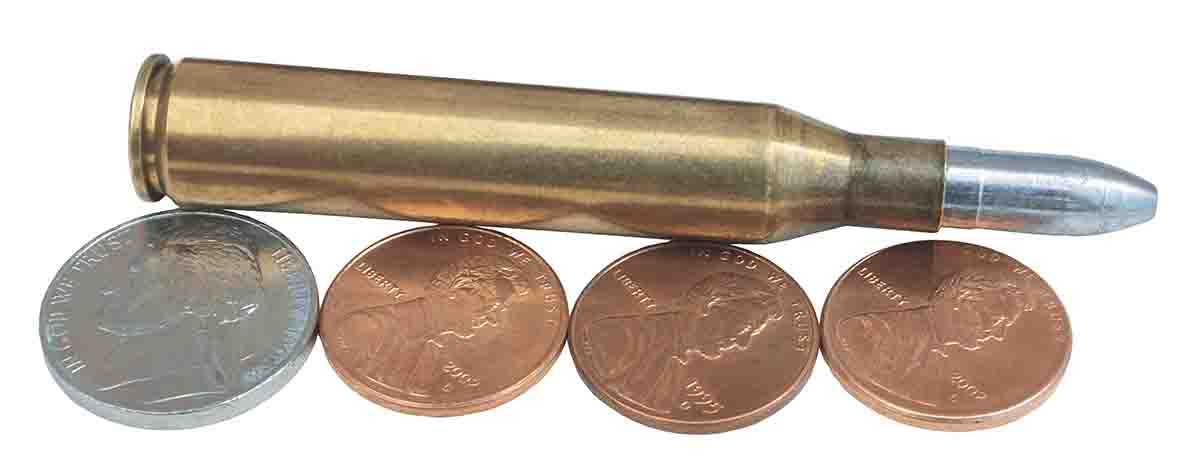
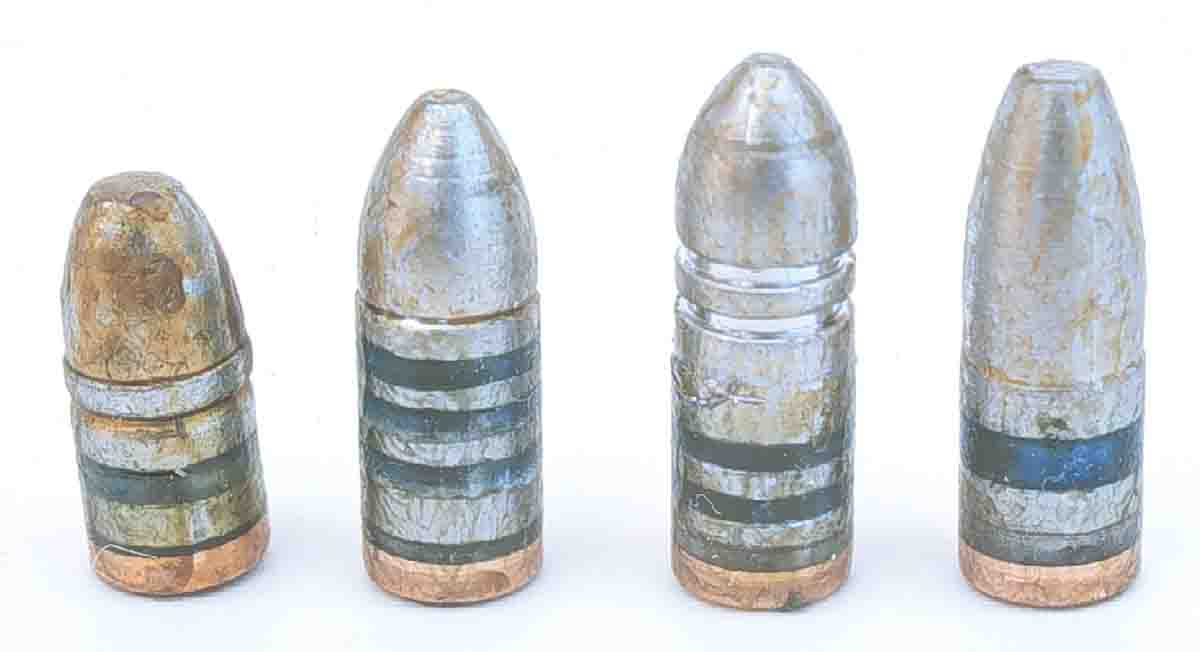
Precision is the primary consideration in developing varmint loads with cast bullets. A ground squirrel (gopher) is about the size of a pop can, so a rifle that groups much over one inch at 100 yards is just wasting lead. Fine accuracy depends on a bullet that fits the rifle’s bore, a lead alloy for the intended velocity and correct powder.
Bullet Considerations
Casting .22-caliber bullets may not be worth the toil. Gas-checked .22 bullets you cast yourself cost about $2 per 100. However, various reloading supply catalogs sell plain-jane jacketed .22-caliber bullets for $5 per 100. So the $3 you save casting your own comes at the expense of your time spent making the bullets. But reloading is a hobby, and satisfaction comes from the busy work.
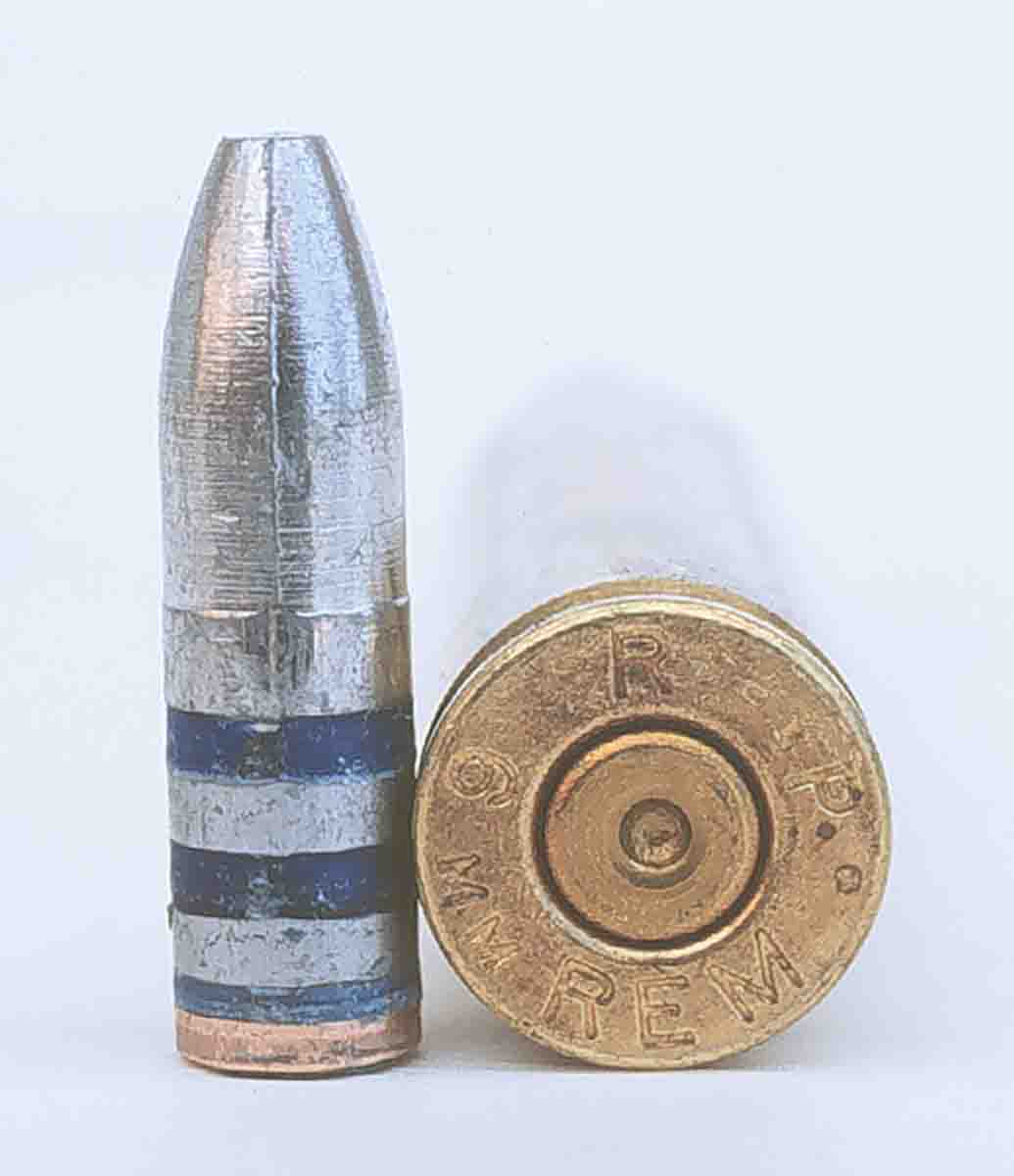
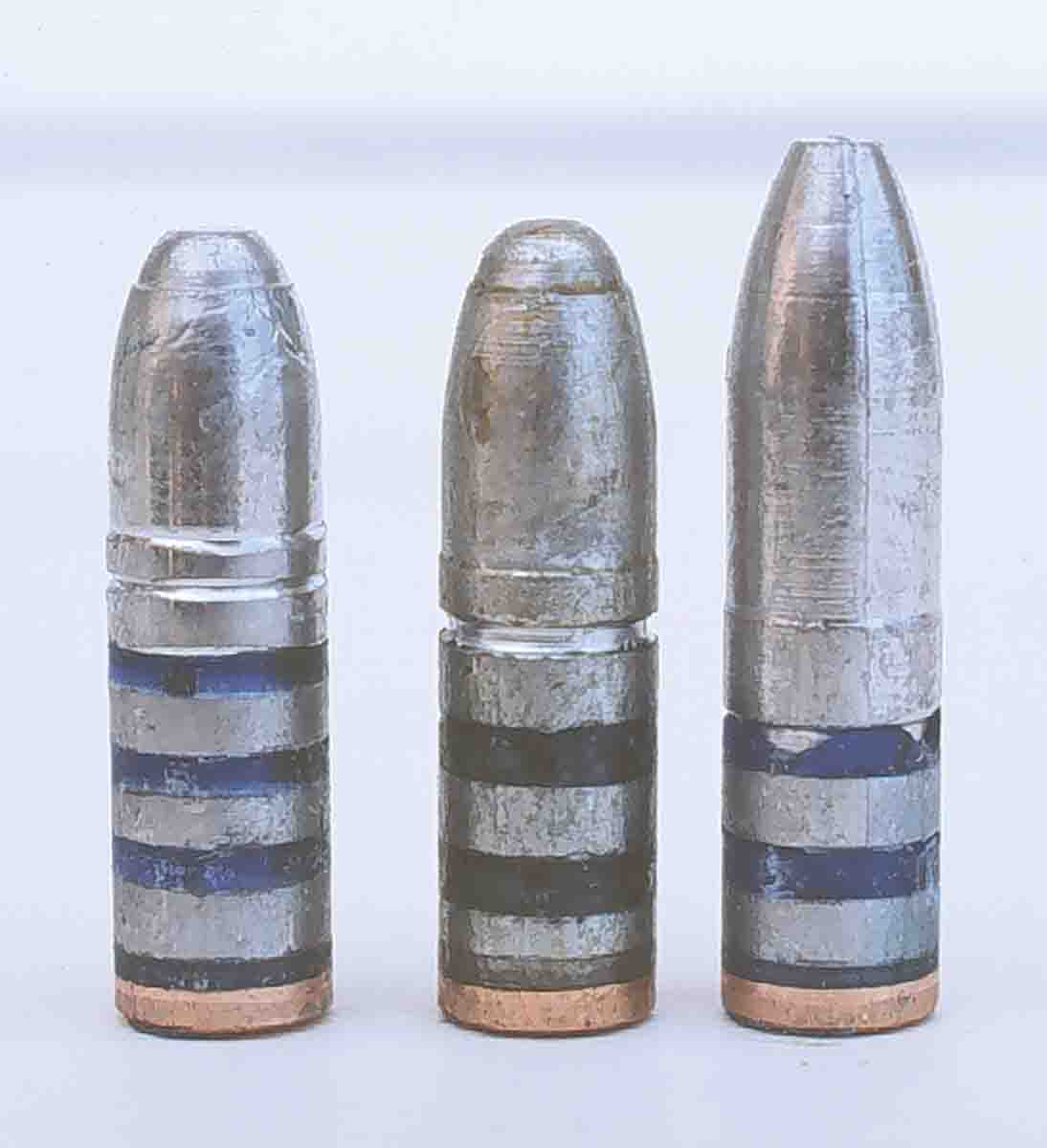
For gopher (and target) shooting out to 100 yards, .22-, .24- and .25-caliber bullets are fine with a muzzle velocity of 1,600 fps. At 60 to 65 yards, these bullets hit 1.3 to 1.5 inches high when sighted in at 100 yards. Once they reach 130 yards, though, they have dropped 3.0 inches and really plunge after that. Higher velocities of 2,000 to 2,300 fps flatten the midrange rise to less than .5 inch and drop at 150 yards to about 3.0 inches.
What bullet speed is chosen, though, depends on the lead alloy of the bullets. Bullets cast of wheelweights are sufficiently hard for speeds up to 2,000 fps. Above that speed, accuracy begins to suffer because the higher pressure and velocity distorts the bullet. Wheelweight bullets can be heat treated to harden them to withstand velocities up to 2,400 fps or so.
I took an easier approach and cast all the bullets listed in the load tables out of harder Linotype. To make sure Linotype was hard enough to withstand these higher velocities, I fired 60 bullets with a muzzle velocity of 2,100 fps from a Kimber Varmint .22-250 Remington. A three-shot group fired after all those rounds measured just over one inch at 100 yards. A Hawkeye borescope revealed only a bit of lead had accumulated in the leade and one short streak on the leading edge of one rifling land. The rest of the bore was clean except for powder fouling and a hint of blue the length of the bore from the Thompson blue lube. Most of the 60 bullets were RCBS-55-SPs that had only one lubricating groove. A patch soaked with Bore Tech Bore Solvent followed by 10 brush strokes then three patches cleaned the bore.
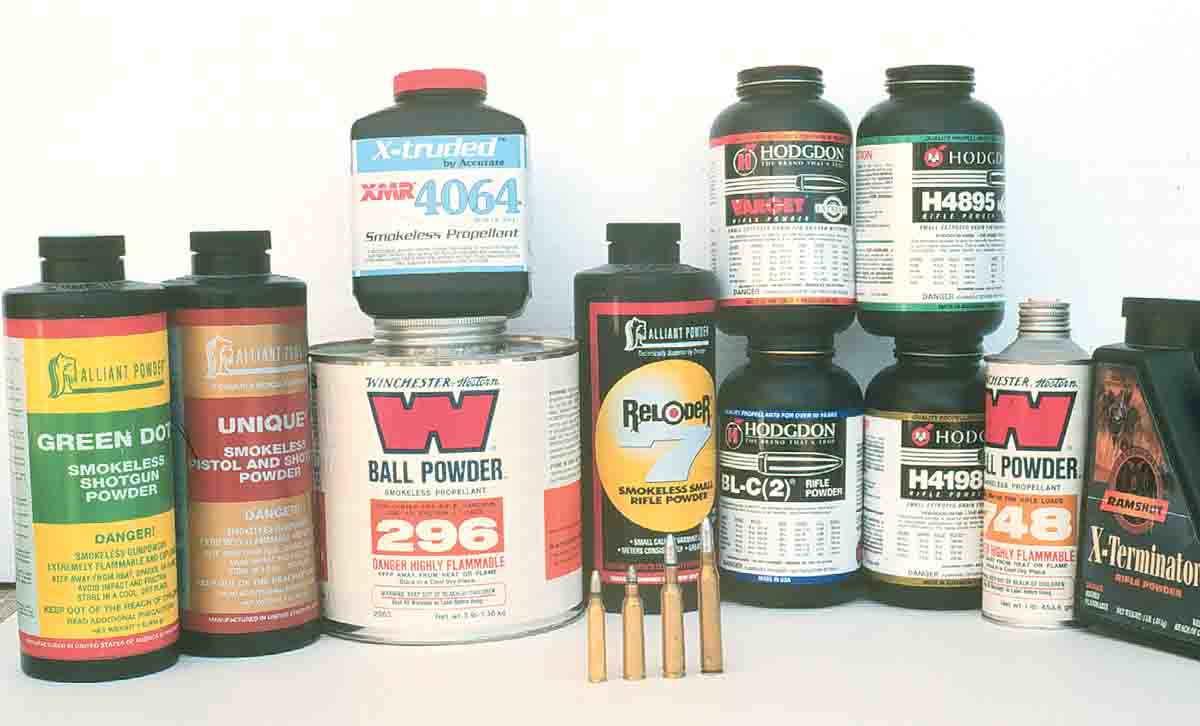
Bullet Designs
Most cast bullets are designed with a short body to fit between a bore’s opposing grooves and a forward section to ride between the lands. This front portion aligns the bullet in the bore and guides it down the bore. Any slop between the two causes misalignment. Wear of the lands in the first inches of the bore makes for even worse shooting, because the bullet is unsupported from the start and wiggles down the bore.
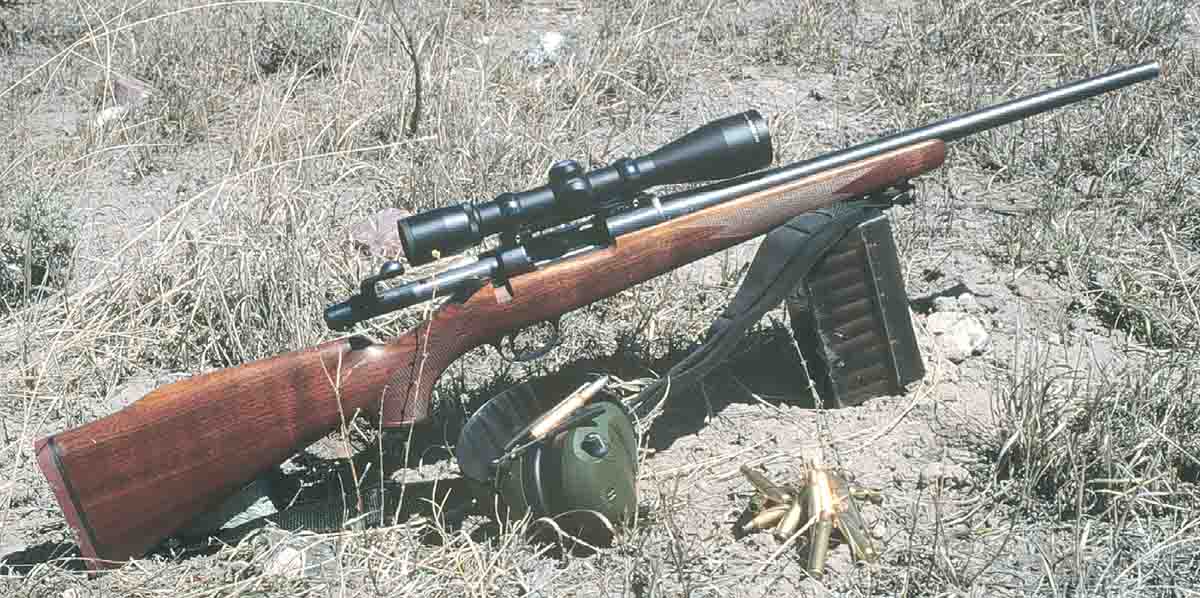
The Lyman 225646 Super Silhouette 55-grain bullet is one such bullet with a short body and long forward section that is supposed to ride on the lands. This bullet also features an additional lubricating groove around a nose that tapers from throat diameter to land diameter to align the bullet with the bore. A bullet with all these features should be the answer to accuracy.
It didn’t exactly work out that way, however. The lubricating groove around the nose can only be filled with lube by hand. If done with a sizer/lubricator press, the taper on the nose is completely filled. In addition, the taper takes up most of the bullet’s nose so only a small portion of the nose rides on the lands. In fact, only 43 percent of the length of the Lyman bullet contacts the bore of a new .22-caliber barrel. Without that support accuracy suffered and the Lyman bullet produced ho-hum results from the .223 and .22-250 Remingtons.
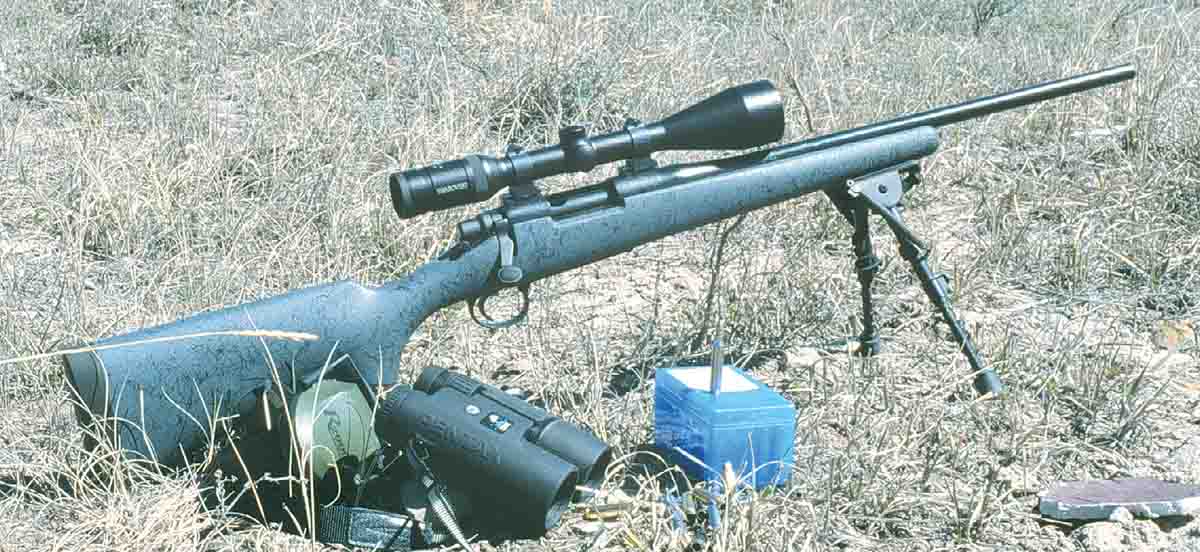
The NEI 45- and 55-grain bullets are designed with a long body of groove diameter. Sixty percent of their length is full diameter body to match groove diameter. The nose of these bullets quickly tapers to a point and doesn’t ride on the lands. This NEI design shot well in the .223 and .22-250 Remingtons.
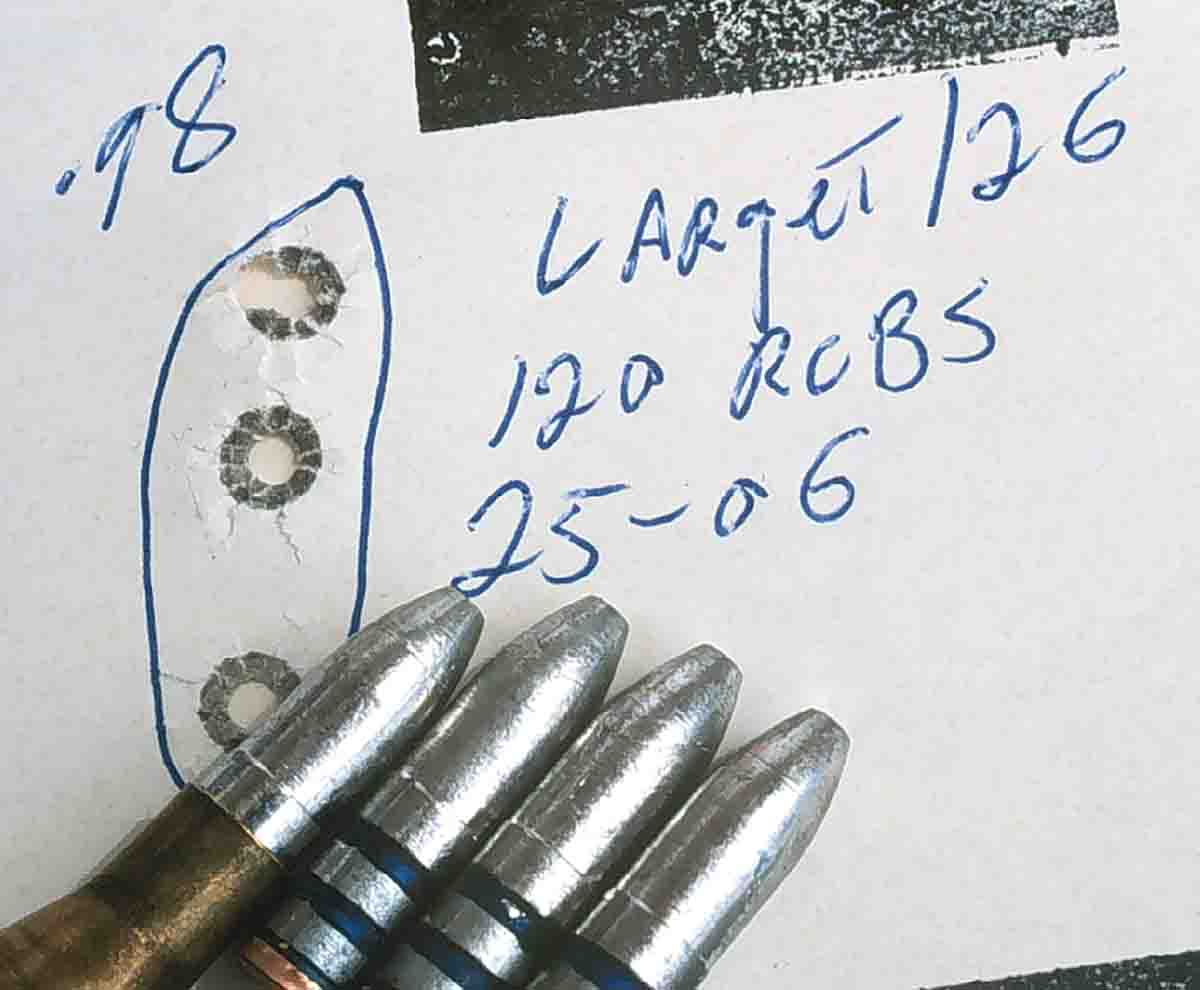
The RCBS-243-095-SP bullet is a true bore-riding bullet and shot very well in the 6mm Remington. In fact, half the loads fired grouped under one inch at 100 yards. A good part of that accuracy was the near perfect dimensions of the bullet as it dropped from the mould. The diameter of the forward section measured .240 inch. When the nose of a bullet was pressed into the bore, the lands left a light engraving on the sides. The bullet’s body diameter measured .2448 inch as it dropped from the mould and .2445 inch after it was run through a .244-inch sizing die. That diameter provided a slip fit in the chamber throat. My 6mm rifle is only slightly worn at the front of the throat, and 72 percent of the bullet’s length was supported by the bore.
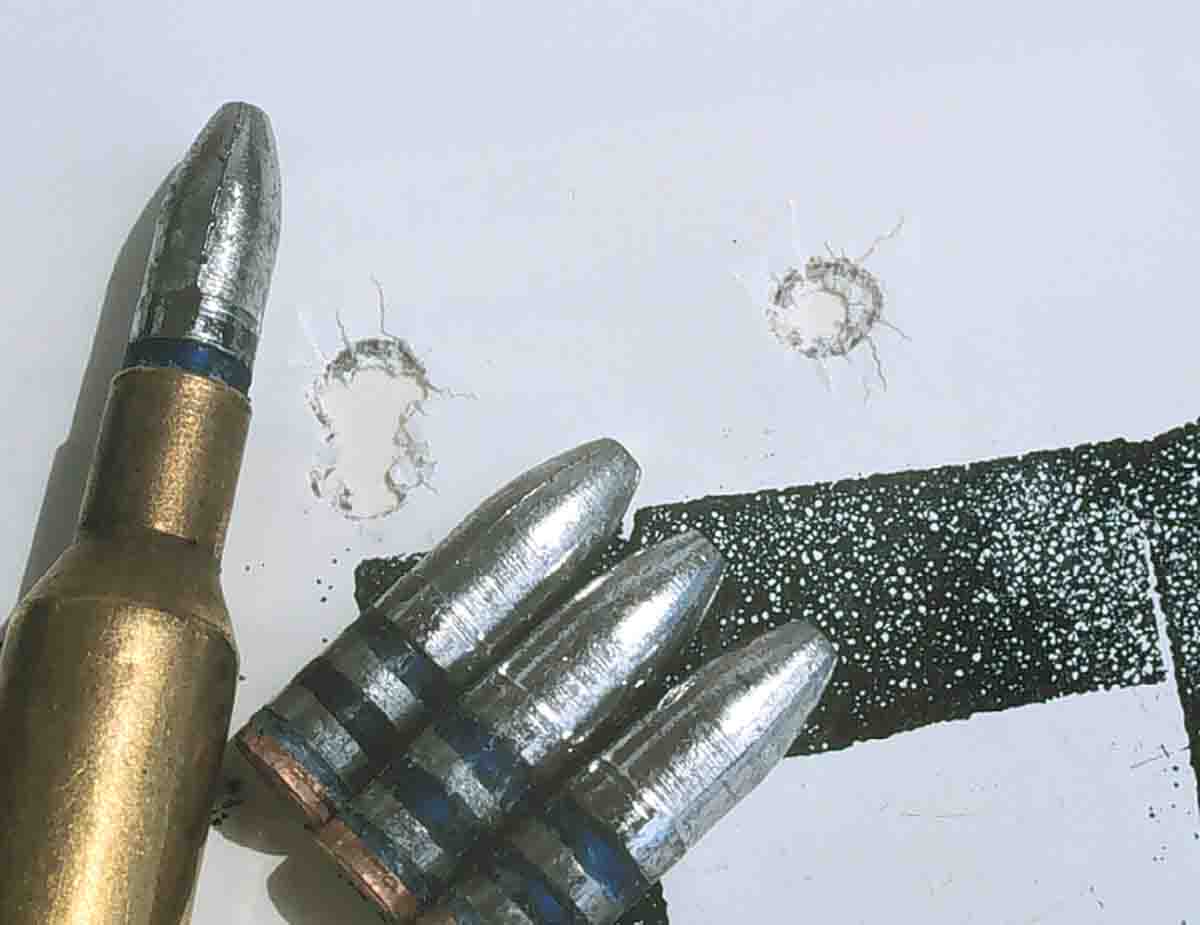
E.H. Harrison, the technical advisor decades ago to the American Rifleman, wrote in a January 1983 article “Bullet Fit Is the Key to Accuracy” that jacketed bullets are guided by a bore’s grooves, and they shoot well as long as the bottoms of a bore’s grooves remain uneroded. Harrison cited military tests that found groove diameter increased only .0004 inch after firing 20,000 rounds of 7.62 Russian. Group size, however, only doubled from what it had been after firing 14,000 rounds.
So for a bore with worn lands, like my poor .25-06 Remington, a cast bullet with a relatively long body of about two calibers long (like a jacketed bullet) would be best. All three of the .25-caliber bullets listed in the load table had
bodies one-half to two-thirds their length. Each one shot a couple of groups that were precise enough to hit a gopher at 150 yards. But compared to the 6mm Remington loads, the .25-06’s worn bore shot rather poorly. Perhaps the time has come to quit procrastinating and have a new .25-06 Remington barrel installed.
Seating Depth
All the bullets listed in the tables were seated so the noses sat snugly against the rifling. That worked well for all the bullets except two. The base of the long body of the NEI 55-grain bullet protruded .147 inch below the case neck. That exposure to powder gas can ruin a bullet’s base and driving bands, but in this case the gas check covers nearly all the exposed base. In the 6mm Remington, the 2.89 inch loaded cartridge length was too long to fit in the Model 600’s magazine. Cartridges measuring 2.80 inches in length fit in the magazine, but I wondered if they would shoot as well. Not to worry, though, because the shorter cartridges grouped a bit tighter. Could it be the 6mm’s relatively long neck, tight fit of the bullet in the throat and the lands kept the bullets in alignment with the bore?
Powders
Relatively fast burning pistol-type powders usually produce good accuracy up to 1,600 fps in .22-, .24- and .25-caliber cartridges. I say usually because Unique produced dismal accuracy in the .25-06 Remington. However, pressures rapidly increase with these powders when velocities are stepped up to 2,000 fps and more. That increased pressure is too much for cast bullets to withstand and accuracy suffers. One exception was Unique in the .223 Remington. This bulky powder filled three-fourths of a .223 case, generated speeds of 2,000 fps and shot great. Seven grains of Unique with the RCBS-55-SP bullet had a velocity spread of zero and grouped the bullets into .59 inch.
At these higher speeds, slower-burning powders like Varget, TAC, Reloder 7, H-4198, XMR-4064 and W-748 burn at nearly half the pressure of pistol powders. Their pressures also rise over a longer period to reduce the slam to a bullet.
.jpg)
The .223 Remington doesn’t burn much of any of these powders with cast bullets. Some amounts were similar to those loaded in the .357 S&W Magnum. So I tried a Small Pistol primer with several powders to find if the primers provided enough flame to ignite these powders and at the same time reduce pressure and turbulence to produce more even speeds. That was the case, at least somewhat, with Unique. Winchester Small Pistol primers had a velocity spread of 55 fps compared to 68 fps for Winchester Small Rifle primers. But as Table I shows, Small Rifle primers produced less velocity spread with other powders and 55-grain bullets in the .223.
In the Field
If only the cost of running my pickup were as inexpensive as these cast bullet loads, I could drive out everyday to shoot gophers. The .223 Remington with a 55-grain bullet and 7 grains of Unique cost 4.5¢ ready to fire; the 6mm and 19 grains of Reloder 7, 7.5¢ apiece; and the .25-06 Remington with 26 grains of Varget and a 120-grain bullet, 8.75¢ apiece. Try matching those prices with any cartridge loaded with a jacketed bullet or even a .22 Winchester Rimfire Magnum.
The gophers had just come out of hibernation the middle of April. Shiny yellow buttercups dotted the wet ground below snowbanks clinging to the shaded slopes. A dozen cow elk trotted out from a ravine, their winter coats shaggy and bleached. I waited until the elk had wandered over the far ridge before I started shooting.
I started with the .223 Remington and the 55-grain RCBS bullet at 2,000 fps zeroed at 100 yards. From the solid rest of a Harris bipod and with the Swarovski scope turned up to 12x, the gophers were easy targets out to 125 yards. Much past that range, though, I had to hold over some to hit. After 100 rounds the bullets began to stick in the rifling when I pulled a loaded round out of the chamber. That was from a dirty bore from lube and powder fouling. For extended shooting, a bullet set back from the rifling would give trouble-free operation. The explosive effect of the bullets on the little gophers carried pretty well out to 150 yards.
The 95-grain 6mm and 120-grain .25-06 bullets didn’t show much eruptive action even up close. These bullets started nearly 300 fps slower than the .22 bullets, yet only 100 fps separated them at 100 yards. Perhaps the long length of the .24 and .25 caliber kept them from tumbling. Even though the two bullets only drilled a hole through the gophers, the little varmints usually gave up the ghost right where they stood, and hawks and ravens started to circle overhead.
I shot gophers until late afternoon. The 300 rounds fired cost less than half a tank of gas for my pickup.


.jpg)
.jpg)